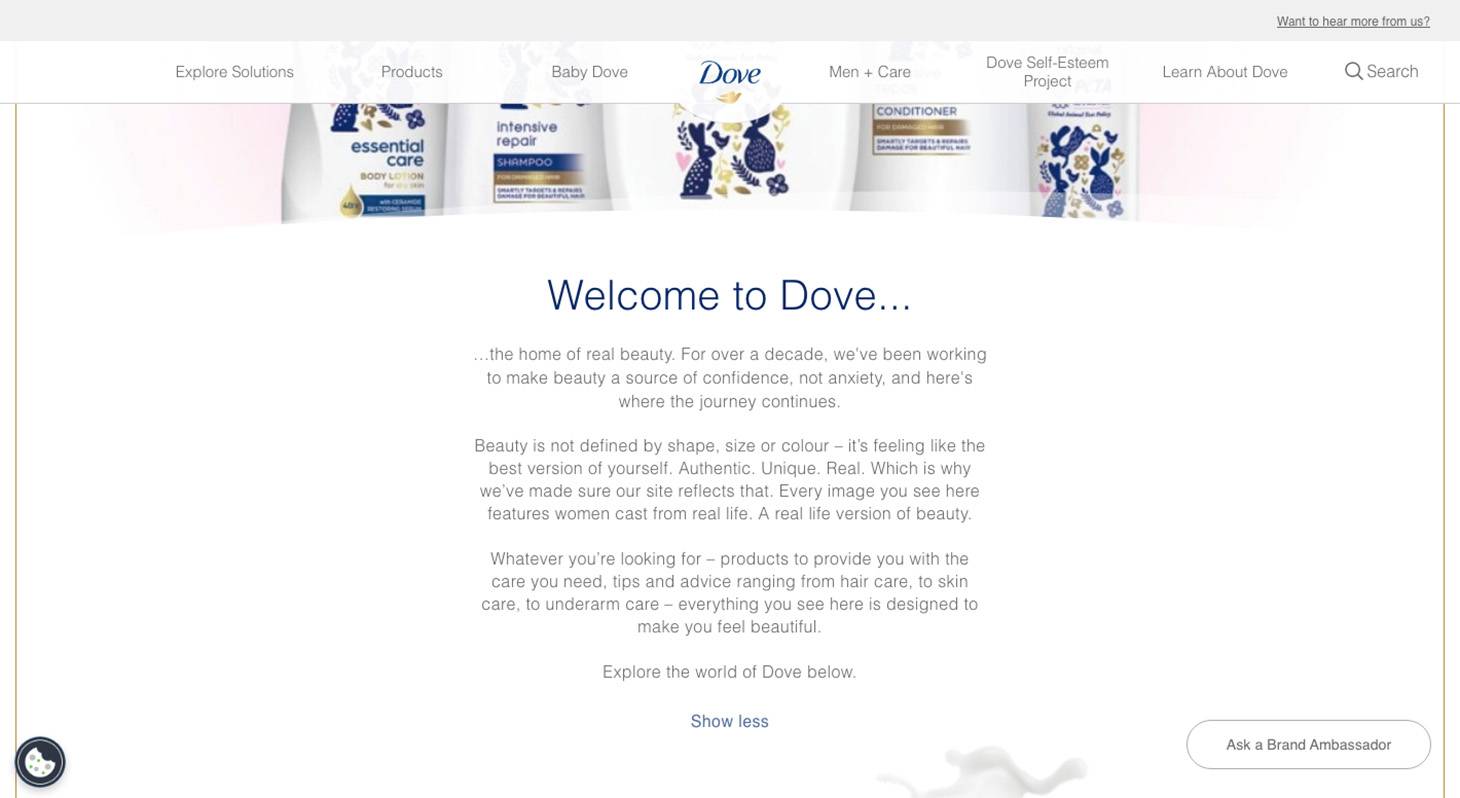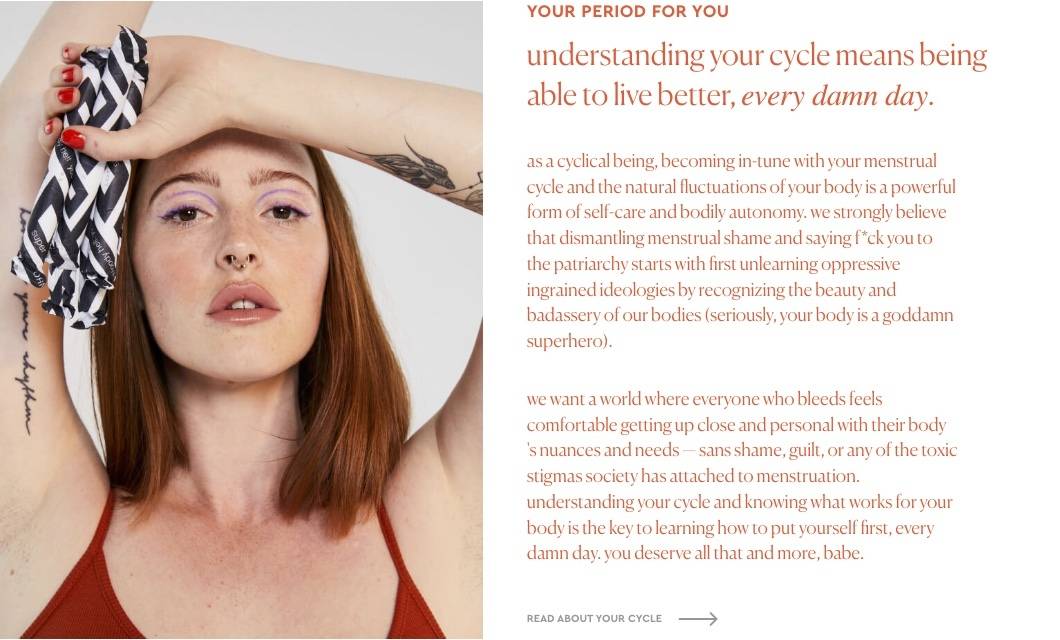Consistency in tone of voice
Maintaining consistency with your tone of voice, and across all channels, is of utmost importance. It doesn’t matter what your tone of voice or brand personality represents – whether it’s light-hearted and fun, or professional and formal – as long as these traits are apparent every time you’re communicating with your audience. The goal is for these values to come across no matter who is writing for your brand. So why is this consistency so important?
- It builds connection and trust in your brand: if people become familiar with what you’re about and what you stand for through each interaction, they’re much more likely to form a lasting connection with your brand and ultimately trust in what you say – particularly if your purpose and beliefs align with theirs (which is exactly the customer you’re aiming to attract).
- Consumers know what to expect when they come to you: your tone of voice and your personality are intrinsically linked, so if people resonate with that, you can become synonymous with a certain concept, i.e. bespoke luxury travel, or sustainable fashion. This will help you to win more customers, increase engagement, and generally provide the customer with a more consistent and enjoyable experience.
- For brand recall purposes: having a unique, but consistent tone of voice will help you to stand out against your competitors and make your brand more memorable. Again, the goal is to become synonymous with a certain set of values and a service that aligns with those. That winning formula will bring loyal customers back, time and again.
If your brand’s messaging and tone of voice is inconsistent, potential customers will get mixed messages about you and what you offer. This can weaken your brand and the perception of your brand, which in turn, can affect your sales.
Another big thing when it comes to consistency in tone of voice is that audiences like to be able to relate and identify with the brands they follow. If your overall voice changes even slightly across different platforms, audiences can find your content and messaging hard to follow and resonate with so don’t make them have to work hard to figure out who you really are as a brand.
It’s all very well having a concrete idea of who you are as a brand internally, but without proper documentation, those creating content and creative campaigns are unlikely to share that effectively with your external audience.
This brings us onto…
The importance of tone of voice documentation
I can’t stress this enough – having easy-to-understand, accessible documentation that clearly outlines your tone of voice using both descriptions and examples is an absolute must.
Who is tone of voice documentation actually for?
Essentially, your tone of voice documentation is designed for anyone creating content for you, including verbal, written and visual.
This could be:
- Internal or external copywriters
- Product owners
- Marketers
- Events teams
- Designers
- External agencies
- Freelancers
So, why do we need written documentation?
Without clear and concise guidance, both your content creators and your customers are at risk of misunderstanding your messaging and purpose. For this reason, written documentation that everyone can follow is crucial.
To help keep everyone on the same page, having a tone of voice document achieves the following:
- Maintains consistency (and in turn quality) in your communication across the board, no matter who’s writing your content
- Ensures all parties are aligned on your values, what you stand for, and how you should sound in written or verbal communication
- Minimises interpretation when it comes to language, tone and overall messaging
- Means a consistent experience for your customers when they interact with your brand
A tone of voice guide can vary in length and in content, but at the very least, you’ll need to outline your brand’s mission statement, purpose and aims, include a little about who your target audience is, and state what your tone of voice traits are. It’s also really helpful to include a short description and an example of these in practice.
We really like Monzo’s tone of voice guide, since it explains really clearly what they’re about, what their tone of voice traits are, and how to use them in real life. It’s also nice and visual and easy to digest – something else to consider when creating your own.
Case Study: aligning on tone of voice for Motors
At Builtvisible, one of our biggest copy projects to date is a tone of voice workshop, competitor analysis, and follow-up documentation for online used-car marketplace Motors.
Following an in-depth content strategy, nailing the tone of voice for Motors was essential ahead of kicking off content production – particularly because different teams were producing different aspects of content for the brand, running the risk of disparate messaging and tone.
Prior to undertaking the workshop and analysis, one of our key priorities was gaining an understanding of Motors’ core brand values, their purpose and unique selling points (USPs). Some of this information was available to us already, however some required ideation calls with Motors, as well as workshop activity sessions to ensure we were all on the same page.
Understanding a brand’s core values and USPs is critical when it comes to creating a unique tone of voice; the two are intrinsically linked and must align for the reasons I’ve outlined above.
In brief, this was our process when it came to creating tone of voice for Motors:
- Collating all existing brand guidelines and tone of voice information
- Hosting an in-depth content and copy onboarding session to understand their content goals and ensure tone of voice supports with those
- Building out and running an in-person brand immersion session and workshop
- Understanding Motors’ audience research
- Undertaking a competitor tone of voice analysis
- Finalising Motors new tone of voice and building out documentation, with examples and a glossary
- Training all writers in the new tone of voice traits and how to implement in their work
The output we ended up with was a detailed tone of voice document, as well as a glossary of brand-friendly terms – two pieces of work which will become the guiding light for those producing content for the brand going forward.
Online and offline tone of voice: real world examples
Now that we understand the importance of aligning tone of voice across online and offline channels, let’s take a look at some great examples.
Dove
Below is a screenshot of beauty and skincare brand Dove’s website homepage:

Dove’s brand values and tone of voice is immediately apparent and heavily reflected in its use of language – that is, inner beauty is what counts, as well as authenticity and self-confidence. Dove uses language which simultaneously empowers their customers and reassures them at the same time. Note the use of wording like ‘the best version of yourself’, ‘real life beauty’, ‘authentic’ and ‘unique’.
Below is an Instagram post by the brand – a different platform, and yet still the same, strong tone of voice and brand messaging shines through.

Ohne
Here, you can see a screenshot of period product brand Ohne’s ‘about us’ page copy:

The brand voice is open and direct, honest, familiar and playful all at once – while its core values are centred around destigmatizing menstrual products. Wording like ‘live better, every damn day’ and ‘your body is a goddamn superhero’ are empowering and confident, while statements like ‘saying f*ck you to the patriarchy starts with first unlearning oppressive ingrained ideologies’ really drive home their purpose and mission.
Below, you can see a screenshot of some of the brand’s products. Immediately it’s clear that Ohne has adeptly aligned their online tone of voice with their offline presence – including their product range itself. Unashamedly playful and bold messaging and product names including ‘holy cramp’ and ‘yours, hormonally’ effortlessly fit the brand’s overall ethos, thus providing the customer with a consistent overall experience.

Final thoughts
In conclusion, ensuring your brand’s tone of voice aligns, no matter the medium or platform, is crucial – both for your reputation as a brand, and for your customers.
We recommend having a tone of voice custodian within your content or marketing teams; in other words, someone who ensures the quality of tone of voice implementation across the business. This person should be a strategic copywriter or content writer, someone who understands the nuances of language and brand messaging.
Here at Builtvisible, we’ve been able to help clients at every end of the spectrum – from documenting their existing tone of voice and QA’ing the implementation of it, to the full package – ideating and creating a brand tone of voice from scratch.
If you want to know more about how we successfully plan and execute tone of voice projects on the strategic copy team, feel free to get in touch and chat things through with one of our dedicated specialists.
